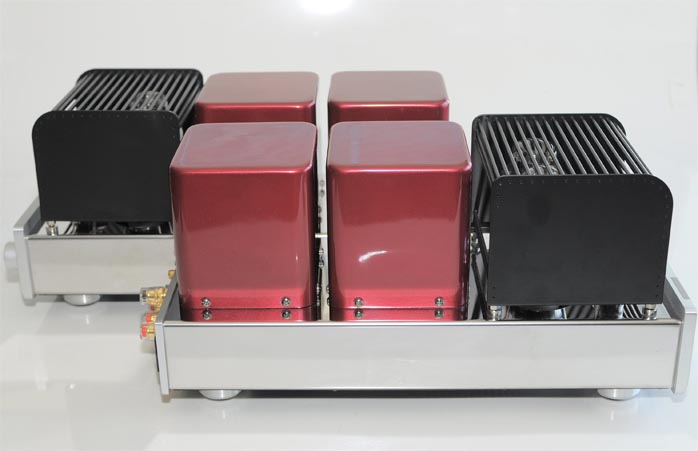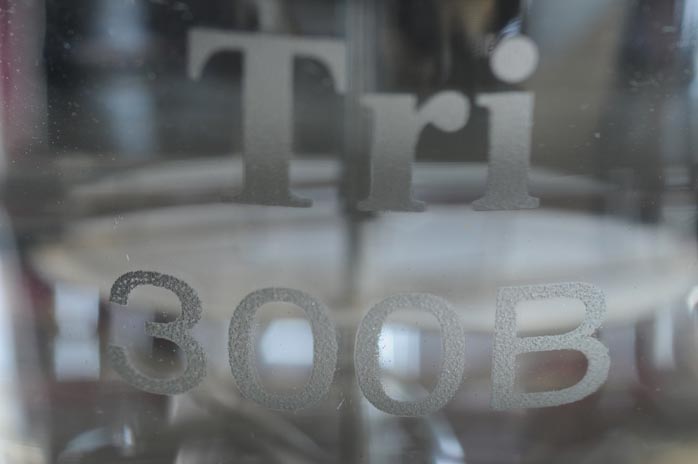|
This review page is supported in part by the sponsors whose ad banners are displayed below
|
|||||||||||||||
 |
|||||||||||||||
 |
|||||||||||||||
| This review was first published in the Dutch print magazine Music Emotion's June 2008 issue. Because Marja & Henk are also on our staff, we obtained permission to reproduce it here as translated by the authors. The original review can be read in this PDF created by Tri's Benelux importer Aspera Audio. - Ed. | |||||||||||||||
|
Reviewer: Marja & Henk Financial Interests: click here Sources: CEC TL5100, Audio Note tube DAC; Philips DVP 5500S SACD/DVD player Preamp/integrated: TacT RCS 2.0 room control system, modified Audio Note Meishu with WE 300B (or AVVT, JJ, KR Audio 300B output tubes); Trends Audio TA-10; Qables iQube; RSA Predator Speakers: Avantgarde Acoustic Duo Omega; Avantgarde Acoustic Solo in HT 2.0 setting; Podium Sound Podium 1 [on loan]; Duevel Planets [in for review] Cables: Audio Note AN/Vx interconnects; Siltech Paris interconnects; Gizmo silver interconnect; Qunex 75 reference interconnect; Crystal Cable CrystalConnect Reference interconnect, CrystalDigit S/PDIF RCA/RCA and RCA/BNC, Y-cable, Crystal Cable Piccolo iPod to XLR, CrystalPower Reference AC-Eur/IEC CrystalSpeak Reference; Audio Note AN-L; Gizmo silver LS cable. Nanotec Golden Strada #79 nano 3; Nanotec Golden Strada #79; Nanotec Golden Strada #201 nano3; ASI LiveLine interconnects; LessLoss DFPC [in for review] Power line conditioning: none Equipment racks: Two double sets of Solid Tech Radius; Acoustic System amplifier shelf Sundry accessories: IAR carbon CD damper; Boston Audio graphite CD damper, Denson demagnetizer CD; Furutech DeMag; Nanotec Nespa #1; Machina Dynamica Magic Box; TacT RCS calibrated microphone and software; Exact Audio Copy software; Compaq server w/Windows Server 2003 and XP; iPod; wood, brass and aluminum cones and pyramids; Xitel surround processor; Manley Skipjack; ASI TopLine; Boston Audio Design TuneBlocks Room treatment: Extensive set of Acoustic System Resonators, Diffusers and Sugar Cubes; Gizmo's Harley Davidson cap Room size: ca. 8.0 x 4.70m with open extension to a 2.20 x 2.40m A/V bay and open kitchen. Ceiling height is 2.50m, reinforced concrete walls of 45cm, reinforced concrete floors and roof of 30cm. Room has on one side a large glass bay. Review component retail: €2.195 TRV-CD4SE; €2.199 TRV-A300SE; €4.299 TRV-M300SE |
|||||||||||||||
 |
|||||||||||||||
Tube amplifiers perform a kind of magic with the music they are offered. Not better or worse than a transistor amplifier per se, just different. On the test bench, vacuum state amplifiers perform far worse than their solid state equivalents but you might be wondering. Are the measuring protocols appropriate?. Judging by ear, the differences are completely - different. |
|||||||||||||||
|
| |||||||||||||||
|
|
|||||||||||||||
 |
|||||||||||||||
In the heyday of the tube amplifier now a half century behind us, power was no issue. The speakers of the period were very sensitive and often equipped with a horn to enhance efficiency even more. During that romantic period, the use of a mono 8-watt amp was sufficient to have cinema audiences swoon over Bogart and Bergman. Building your own tube amplifier became a popular hobby and tubes were widely available after World War II. Put more succinctly, the tube supplies were so sizable that even today tubes from that period and earlier (from the rarer 1930s) are available as so-called New Old Stock. One of the most popular tubes for single-ended audio use is the 300B. This very simple triode wired for class A operation has an amplification factor of 3,8 with a 300 volt supply current and 60 mA bias current. These specifications at the time of introduction by Western Electric were good for 6 watts of glorious output power. Mind you, this was in 1938. |
|||||||||||||||
 |
|||||||||||||||
By raising the plate voltage, an 8 watt power rating was possible without impacting the life span of the tube. In a short time, the simplicity of the circuit requirements and the musical quality of the final signal made the 300B very popular. Western Electric produced this tube from 1938 to 1988. Because of its popularity, other tube manufacturers jumped into the sector which resulted in exact clones of the WE 300B and various experiments with other internal layouts, materials and more output power, especially from the former Czechoslovakia where you could (and still can) find the old Philips tube factories and their equipment. Brands like KR, AVVT (now Emission Labs) and JJ produce not only standard 300Bs but variants on steroids. Relatively new on the market is EAT from Slovakia. Next to Europe China remains an important player in the tube market. Sophia Electric and Shuguang are known brands. This last name is one to remember as Shuguang works as OEM for a lot of amplifier producers. |
|||||||||||||||
 |
|||||||||||||||
When we were asked to review a couple of 300B amplifiers from the Triode Corporation or Tri for short, we were pleasantly surprised. Tri is a Japanese company and designer Junichiro Yamazaki likes simple, well thought-out designs. Besides a pair of monoblocks and their matching integrated amp, we also received the new Tri CD player. This presented a lot of opportunities to learn what the Triode Corporation had to offer. |
|||||||||||||||
 |
We started with the Tri TRV-M300SE monoblocks. Most obvious after unraveling the perfect Japanese packaging was the beautiful finish. The front of the long narrow amplifiers is trimmed out in a thick aluminum plate with a subtle color accent and the power mains switch. On the right sits an attenuator to eliminate a preamp if desired. With a depth of 44cm, a height of 20cm and a width of 18cm, the 15 kilos of this design are nicely dimensioned. Below the obligatory (in the EU) tube cage which was easily removed, the tubes took pride of place - one 12AX7 and 12AU7 double triode each in a mu-follower configuration and a pair of paralleled 300Bs. The mu follower is responsible for distortion reduction, the parallel operation of the power tubes explains the output doubling while still remaining single-ended where one output device (here two) amplifies both the signal's positive and negative phase without switching off. This is exclusive to class A operation (though not single-ended - push/pull too can be operated in class A). Benefits of single-ended operation are better linearity (no zero-crossing distortion), stability and the reduction of higher-order harmonic distortion. But the most favorite benefit must be the possible absence of any negative feedback at all. |
||||||||||||||
| Behind the two Tri-labeled 300Bs tubes are the power and output transformers in their beautiful red lacquer casings. The biggest share of the amplifiers' weight derives from the iron cores and the many meters of | |||||||||||||||
| 6N copper windings around them. For both monoblocks, this adds up to about 20 kilos combined. The top plate of the amplifiers is made of high-gloss chromed steel which continues around the sides. Around back it got even more interesting as here we found 4, 8 and 16-ohm terminals besides the low-level inputs. Because our Avantgarde Duo Omega horns are rated at 16 ohms, this was a potentially exciting discovery. |
|||||||||||||||
|
| |||||||||||||||
 |
|||||||||||||||
 |
|||||||||||||||